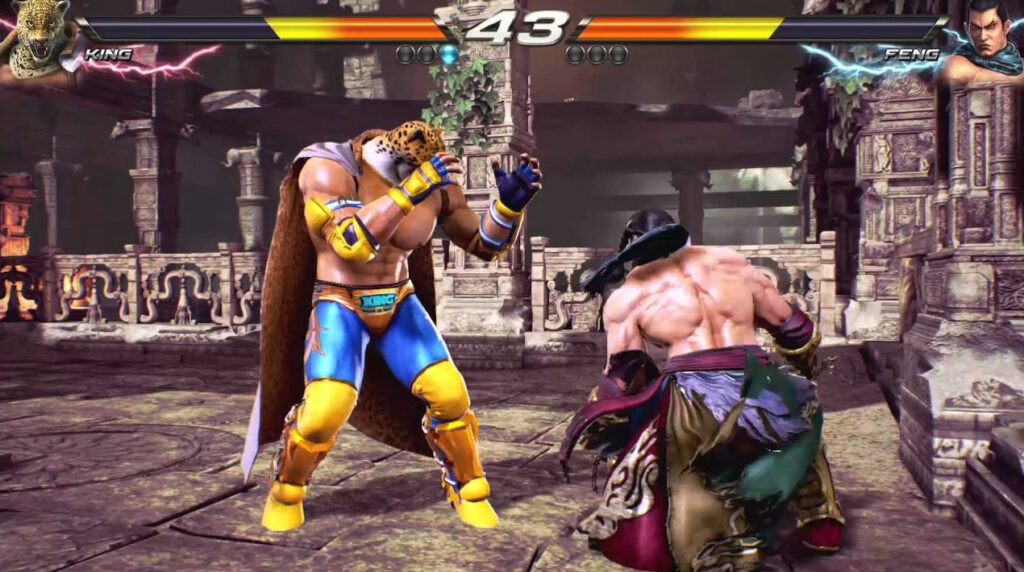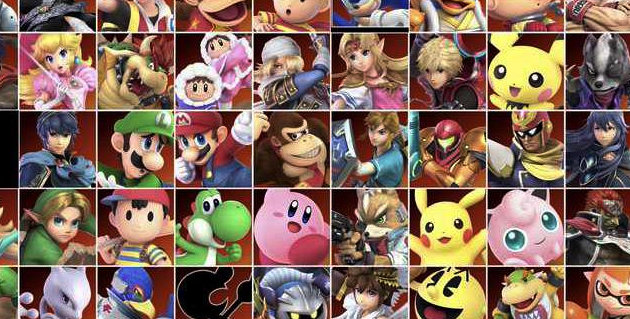Introduction to Combos
Combos are a fundamental element in fighting games, representing a series of connected attacks that a player can execute to maximize damage against an opponent. Essentially, these sequences allow players to leverage their character’s unique abilities, transitioning fluidly from one move to another without giving the adversary a chance to retaliate. This seamless flow of attacks not only elevates the player’s offensive capabilities but also enhances the excitement and complexity of gameplay.
The mechanics behind combos involve chaining attacks together; this requires a deep understanding of timing, spacing, and character attributes. Each fighting game may have its own distinct set of rules and variations regarding how combos function, but the core principles remain largely the same across genres. Players typically initiate a combo with a basic attack, followed by more powerful moves that require specific input sequences. Mastering these combinations is crucial for any serious player who desires to improve their performance.
Furthermore, the timing of each move in a combo is vital. Players must ensure they execute the next attack at the right moment, as failing to do so can interrupt the sequence or leave them vulnerable to counterattacks. Effective timing often comes with practice and familiarity with the character’s unique capabilities. Each character in a fighting game possesses different strengths and weaknesses, all of which affect the construction and execution of combos. Consequently, understanding these dynamics is critical for honing one’s skillset.
Mastering the art of combos not only enhances individual gameplay but also contributes to a deeper enjoyment of fighting games as a whole. With an expansive range of combinations available, players can experiment and develop their own unique styles while competing against others, thereby enriching the overall gaming experience.
Understanding Combo Mechanics
In the realm of fighting games, understanding combo mechanics is fundamental to enhancing a player’s technique and overall performance. Combos are sequences of attacks that, when executed correctly, allow players to deal significant damage to their opponents while minimizing their opportunity to respond. Key components that influence the effectiveness of combos include frame data, hit stun, and combo efficiency.
Frame data refers to the timing of each move within a combo. Each move has a specific number of frames that dictate how long it takes to execute, how long it takes for an opponent to recover, and when they can act again. This information is crucial for optimizing combos, as knowing the precise timings allows players to chain attacks seamlessly. Properly understanding frame data can empower players to create more complex and effective combos, capitalizing on an opponent’s vulnerability.
Hit stun is another crucial factor in combo mechanics. This term describes the period during which an opponent is unable to defend or move after being hit by an attack. The duration of hit stun varies depending on the move used and the character involved. Understanding hit stun not only aids in determining the number of follow-up attacks possible after an initial hit but also enables players to adapt their strategies based on the specific characteristics of the characters they engage with.
Finally, combo efficiency is essential for maximizing damage output within a match. This concept encompasses the execution speed, reliability, and overall damage potential of a given combo. Players should aim for efficient combos that utilize minimal inputs while providing maximum damage. By focusing on these elements—frame data, hit stun, and combo efficiency—players can build a solid foundation that will aid them in mastering more advanced techniques in fighting games.
Types of Combos
In the realm of fighting games, mastering combos is an essential aspect of gameplay. Combos can be categorized into various types, each serving different purposes and strategies within the game. Understanding these categories can greatly enhance a player’s technique and effectiveness in combat.
One of the most fundamental types is the simple combo. This category often consists of straightforward sequences of attacks that are easy to execute, making them ideal for beginners. Simple combos typically require minimal timing and precision, allowing players to familiarize themselves with the combo mechanics without overwhelming complexity. They usually serve to capitalize on minor openings in an opponent’s defense.
Another critical type of combo is the juggle combo. Juggling involves launching the opponent into the air and stringing together a series of attacks before they can recover. This type of combo requires precise timing and positioning, as players must juggle their opponents without allowing them to fall back to the ground. Juggle combos are particularly effective in punishing mistakes or excessive aggression from opponents.
Launcher combos are also significant, as they initiate an upward motion that sends opponents airborne. These combos often transition into juggle sequences, allowing players to maximize damage potential. Launchers can be implemented after an opponent’s block is broken or as a counter-attack against aggressive maneuvers.
Lastly, reset combos allow players to intentionally stop a combo early to reset the situation. This strategy can catch opponents off-guard, leading to unexpected attacks or additional combos. Reset combos are typically used by advanced players to create opportunities for further damage or to confuse opponents regarding their next moves.
By understanding and implementing these various types of combos—simple, juggle, launcher, and reset—players can adapt their strategy to suit specific situations, enhancing their overall performance in fighting games.
Choosing the Right Character
In the realm of fighting games, the selection of a character is a critical decision that can significantly impact one’s effectiveness in executing combos. Each character comes equipped with a unique set of abilities, strengths, and weaknesses, which influences their combo potential. Therefore, understanding your character’s capabilities is essential to developing a robust strategy and mastering the art of combos.
When choosing a character, it is essential to consider your preferred play style. For instance, some players may favor aggressive and high-damage characters, while others might opt for more defensive and strategic fighters. Each category provides distinct opportunities for combo execution. Characters with fast normals and significant mobility may enable players to string together combos quickly, while those with slower, heavy-hitting moves may require more precise timing and positioning to ensure successful hits. Identifying the play style that resonates with you can help narrow down character choices significantly.
Additionally, understanding a character’s combo potential is vital for effective gameplay. Some characters may possess extensive combo options, allowing for creative chains that can dazzle opponents. Conversely, others might be limited in their combo variety, which could restrict a player’s ability to adapt in various match situations. Players are thus encouraged to experiment with different characters during practice sessions, focusing on their individual strengths and the evolving dynamics of their move sets.
Incorporating these aspects into your character selection process not only enhances your enjoyment of the game but also contributes to your overall competency in executing combos. By judiciously choosing a character that aligns with your play style and combo potential, players can cultivate effective techniques that set them up for success in their fighting game endeavors.
Building Combo Creativity
In fighting games, the creativity behind combo construction is not only a display of technical skill but also an inherent part of character expression. To foster this creativity, players should begin by understanding the core mechanics of their character, including move properties such as speed, range, and damage output. Knowing these attributes will equip players with the necessary framework to experiment effectively. Once familiar with the character’s moveset, players can start mixing different attacks and special moves into unique sequences.
Experimentation is crucial when developing distinctive combos. This can involve taking a basic combo and integrating less commonly used moves or even special abilities. For instance, players might start with a standard combo and then link it to a launch move, subsequently following it up with a powerful finisher. This approach not only adds variability to gameplay but also contributes to an individual player’s style. Players should not be afraid to break away from conventional strategies, as some of the most memorable combos arise from unexpected combinations of moves.
However, in the pursuit of creativity, balance must be maintained. While showcasing flair is important, it is equally essential for combos to remain effective within the framework of the game. A flashy combination that leaves the player vulnerable is often less valuable than a more straightforward but reliable sequence. Players should regularly test new ideas in practice mode, ensuring that their creative combos are not only visually impressive but also practical. Ultimately, the goal is to develop a unique approach to combo-building that allows one to stand out in matches while still retaining a focus on effectiveness.
Through continuous experimentation and mindfulness of gameplay dynamics, players can cultivate a distinctive and effective style that enhances their overall performance in fighting games.
Training Tools & Methods
In the realm of fighting games, mastering combos is critical for achieving success in competitive play. Various training tools and methods are available to help players improve their technique, refine their execution, and enhance their overall gameplay experience. These tools are essential for developing muscle memory and ensuring that players can perform combos with precision under pressure.
One of the primary training resources is the in-game practice mode, which allows players to experiment with their character’s moves without the constraints of a match. This mode offers a safe environment to explore different combo sequences, test their timing, and understand the mechanics of each character. By repeatedly practicing in this mode, players can work on perfecting their inputs and refining their techniques.
Additionally, many fighting games provide combo trials, which are structured challenges that guide players through specific sequences of moves. These trials help players learn the intricacies of their character’s capabilities and provide a benchmark for improvement. Successfully completing combo trials not only boosts a player’s confidence but also enhances their ability to execute complex maneuvers in actual matches.
Furthermore, leveraging online resources can significantly enhance a player’s training regimen. Websites and forums dedicated to fighting games often feature detailed guides, video tutorials, and community discussions focused on various aspects of gameplay, including combo execution. Players can learn from seasoned experts and gain insights into effective strategies, optimal combo setups, and character-specific tactics.
Combining these tools and methods fosters an environment where players can continuously develop their skills. Therefore, incorporating diverse training approaches, such as practice modes, combo trials, and online learning, is crucial for any aspiring player looking to improve their combos and elevate their performance in fighting games. Through persistent practice and resource utilization, players can achieve a heightened level of proficiency in their gameplay.
Common Mistakes to Avoid
Mastering combos in fighting games can be a challenging endeavor, and even experienced players can fall prey to common pitfalls that hinder their progress. One frequent mistake is improper timing when executing combos. Many players overlook the crucial timing aspect, believing that the sequence of attacks alone is sufficient for success. However, each character has a specific rhythm that must be adhered to in order to achieve optimal performance. Failing to time inputs correctly may lead to missed opportunities for follow-up attacks or, worse, leave players vulnerable to counterattacks.
Another significant error involves the underutilization of practice modes. Many fighters provide training features designed specifically to help players refine their combo execution and timing. Unfortunately, a substantial number of gamers neglect these tools, favoring actual matches over the invaluable experience provided by practice. It is essential to devote time to these modes to familiarize oneself with both the character’s moves and the unique properties of combos, such as range and speed. This practice lays the groundwork for better performance in competitive scenarios.
An additional common mistake occurs when players become overly reliant on a single combo or approach. While mastering particular sequences is vital for building skills, overusing a limited set of combos can make a player predictable in matches. Successful fighters often diversify their techniques, learning various combinations for different situations. This strategic versatility allows players to keep opponents guessing, making it more challenging for them to mount a successful defense.
Finally, failing to adapt to opponent’s strategies can severely limit a player’s effectiveness. Each match presents a unique set of challenges, and recognizing an opponent’s patterns can provide critical insight into when to employ specific combos. Emphasizing adaptability and vigilance eliminates many common mistakes and promotes long-term improvement in the art of combos in fighting games.
Watching and Learning from the Pros
In the realm of fighting games, the importance of studying professional players cannot be overstated. These top-tier competitors exhibit exceptional skill and mastery of game mechanics, which can serve as valuable learning tools for aspiring players. By closely observing tournament matches, players are exposed to advanced combo techniques and strategies that are often pivotal in high-stakes competitions.
One effective method of learning is through participation in online streams and video content featuring expert gameplay. Platforms such as Twitch and YouTube provide an abundant resource of matches, tutorials, and commentary that can significantly enhance a player’s understanding of various fighting games. Watching how professionals execute their combos under pressure teaches not only the timing and precision required but also the mental aspects of remaining composed and making quick decisions during combat. This dual focus on technique and mindset is crucial for improving one’s overall gameplay.
Additionally, studying specific characters played by professionals allows players to grasp the intricacies of character matchups. By observing how top players manipulate their characters’ unique abilities and combo potential, learners can gain insights into effective strategies, spacing, and punishes that may not be immediately apparent during casual play. Such direct observation of elite gameplay patterns promotes deeper knowledge of character dynamics and combo capabilities, thus expanding a player’s repertoire.
Moreover, many professional players often share their strategies and thought processes in post-match interviews or social media platforms. Engaging with these discussions not only deepens comprehension of combo execution but also introduces new perspectives on game theory and tactics. Ultimately, leveraging the wealth of knowledge available from the pros is an integral aspect of refining one’s technique in fighting games, paving the way for greater skill development and competitive success.
Conclusion and Next Steps
In summary, mastering the art of combos in fighting games is a multifaceted journey that requires dedication, practice, and a strategic understanding of your chosen character’s capabilities. Throughout this blog post, we have highlighted the significance of learning the fundamentals, understanding timing and spacing, and employing the correct execution techniques. It is essential for players to recognize that developing a robust combo technique is not only a method to enhance their gameplay but also a way to enjoy the rich, competitive nature of fighting games.
As you embark on your quest to improve your combo skills, it is advisable to engage with the vibrant communities present within the fighting game scene. Joining online forums, participating in social media groups, or engaging on platforms dedicated to fighting games can enhance your learning experience. These communities are typically filled with experienced players who share their insights, strategies, and provide feedback that can be invaluable to both beginners and seasoned fighters alike.
Another crucial step is to consider participating in local tournaments or online competitions. These environments present an excellent opportunity to put your skills to the test against diverse opponents. Additionally, tournaments can foster a sense of camaraderie and provide motivation to refine your technique through friendly rivalry.
Finally, continual practice cannot be overstated. Regularly dedicating time to refine your combos, experimenting with new strategies, and reviewing your gameplay will solidify the skills you have learned. Remember, mastery of combos in fighting games is a process that takes time and effort, but the satisfaction derived from your improvements will be a rewarding aspect of your gaming experience. Embrace the challenge, stay committed, and enjoy the transformative journey ahead in mastering the art of combos.


